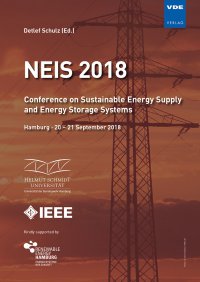Power Re-Dispatch Reduction with Nodal Voltage Angle Control in Storage Power Plants
Conference: NEIS 2018 - Conference on Sustainable Energy Supply and Energy Storage Systems
09/20/2018 - 09/21/2018 at Hamburg, Deutschland
Proceedings: NEIS 2018
Pages: 7Language: englishTyp: PDF
Personal VDE Members are entitled to a 10% discount on this title
Authors:
Weber, Harald; Ahmed, Nayeemuddin; Baskar, Preethi (Electrical Energy Supply (EEV), Institute for Electrical Power Engineering (IEE), University of Rostock, 18059 Rostock, Germany)
Abstract:
Integration of fluctuating renewable energies into the power system has introduced new challenges in terms of providing grid stability. Nowadays, changes in the weather influences the influx of electrical energy into the network. Often, this upsets the balance between the supply and demand of electrical power, initiating re-dispatch measures to maintain grid stability. Such re-dispatch actions in Germany has cost approximately 402.5 million Euros in 2015 [1]. In this paper, a layout is proposed for a power station involving power electronic converters that can include storages for renewable energy taking different generation speeds into account. A novel method is utilized to control the electrical power distribution by these new storage power plants. All the control principles necessary involving spinning reserve, primary and secondary control depending on frequency are substituted by a comprehensive angle control of the nodal voltages in the transmission and distribution network. It is observed that whenever the power requirement of the loads increase, the storage power plants satisfy this rising demand with the power stations closest to the point of increasing consumption automatically producing the most power. Generating the most power close the point of consumption drastically reduces high power flows in transmission lines and the need for excessive power re-dispatch measures.


